Themed collection Nanoscale 10th Anniversary: Top Authors

Micro/nanomachines: what is needed for them to become a real force in cancer therapy?
A biomedical perspective is used to assess micro/nanomotor-based anticancer drug delivery systems with recommendations for their effective future development.
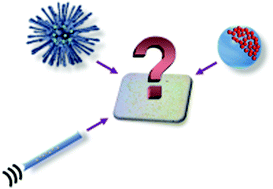
Nanoscale, 2019,11, 6519-6532
https://doi.org/10.1039/C8NR08022D
Occupational exposure to graphene based nanomaterials: risk assessment
The most significant routes associated with occupational exposure to graphene-based materials (GBMs) are the inhalation, cutaneous, ocular and oral ones. The manuscript presents a review of the in vivo toxicity data of GBMs after these exposure routes.
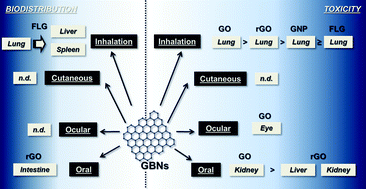
Nanoscale, 2018,10, 15894-15903
https://doi.org/10.1039/C8NR04950E
Au25(SR)18: the captain of the great nanocluster ship
Au25(SR)18, as the captain of the great nanocluster ship, is capable of reviewing the history and guiding the future of the nanoclusters.
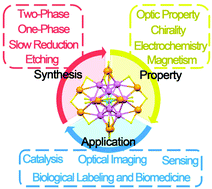
Nanoscale, 2018,10, 10758-10834
https://doi.org/10.1039/C8NR02973C
Predicting the impact of structural diversity on the performance of nanodiamond drug carriers
Diamond nanoparticles (nanodiamonds) are unique among carbon nanomaterials, and are quickly establishing a niché in the biomedical application domain.
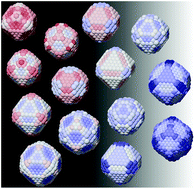
Nanoscale, 2018,10, 8893-8910
https://doi.org/10.1039/C8NR01688G
Recent advances in spectroelectrochemistry
The typical structures, types, principle, application, and prospects of different kinds of spectroelectrochemistry.
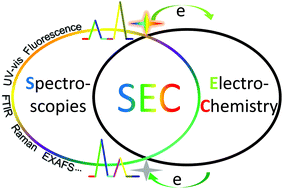
Nanoscale, 2018,10, 3089-3111
https://doi.org/10.1039/C7NR07803J
Urchin-like NiO–NiCo2O4 heterostructure microsphere catalysts for enhanced rechargeable non-aqueous Li–O2 batteries
Benefiting from the synergetic effect between NiO and NiCo2O4 and the heterostructure, urchin-like NiO–NiCo2O4 microspheres exhibited favorable electrocatalytic performance for Li–O2 batteries.
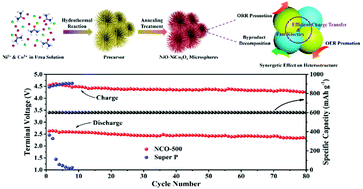
Nanoscale, 2019,11, 50-59
https://doi.org/10.1039/C8NR08457B
Oxygen vacancy enriched hollow cobaltosic oxide frames with ultrathin walls for efficient energy storage and biosensing
Hierarchical cobaltosic oxide frames with enriched oxygen vacancies and finely tuned nanostructures are prepared by one-step calcination in air.
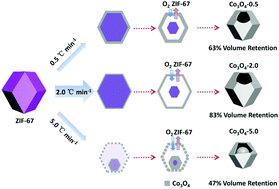
Nanoscale, 2018,10, 21006-21012
https://doi.org/10.1039/C8NR07444E
An ultrafine platinum–cobalt alloy decorated cobalt nanowire array with superb activity toward alkaline hydrogen evolution
Ultrafine PtCo nanoparticles decorated Co nanowires on Ti mesh deliver an ultrahigh current density of 46.5 mA cm−2 at an overpotential of 70 mV in 1.0 M KOH.
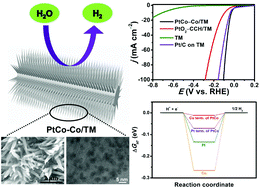
Nanoscale, 2018,10, 12302-12307
https://doi.org/10.1039/C8NR02071J
Polymorphism of Ag29(BDT)12(TPP)43− cluster: interactions of secondary ligands and their effect on solid state luminescence
We present the first example of polymorphism (cubic & trigonal) in single crystals of an atomically precise monolayer protected cluster, Ag29(BDT)12(TPP)43−.

Nanoscale, 2018,10, 9851-9855
https://doi.org/10.1039/C8NR02629G
A detour strategy for colloidally stable block-copolymer grafted MAPbBr3 quantum dots in water with long photoluminescence lifetime
We report a facile and general strategy for the preparation of aqueous colloidally stable block-copolymer grafted perovskite quantum dots with remarkable long-term thermo-, photo-, and pH-stability.

Nanoscale, 2018,10, 5820-5826
https://doi.org/10.1039/C8NR01493K
Holey nickel hydroxide nanosheets for wearable solid-state fiber-supercapacitors
Ultrathin and holey nickel hydroxide nanosheets are synthesized and embedded in carbon nanotube fiber for high performance wearable supercapacitors.
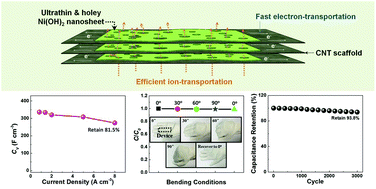
Nanoscale, 2018,10, 5442-5448
https://doi.org/10.1039/C7NR09682H
Multi-functional organosilane-polymerized carbon dot inverse opals
This paper demonstrates multi-functional optical properties of organosilane-polymerized carbon dot inverse opals, such as tricolor-fluorescence, fluorescence enhancement, multi-color micro-patterns for anti-fake applications and a thermally-induced blueshift of the bandgaps.
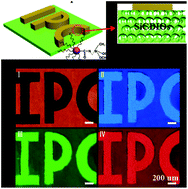
Nanoscale, 2018,10, 4642-4649
https://doi.org/10.1039/C7NR09387J
Selective growth of two-dimensional phosphorene on catalyst surface
Selective CVD synthesis of phosphorene isomers by choosing different metal substrates—black phosphorene on Sn surface and blue phosphorene on Au or Ag surface.
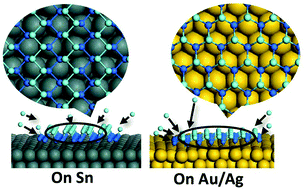
Nanoscale, 2018,10, 2255-2259
https://doi.org/10.1039/C7NR08507A
A plasmon modulated photothermoelectric photodetector in silicon nanostripes
We report a plasmon modulated silicon nanostripe PTE detector with an open-circuit photovoltage responsivity of ∼82 mV μW−1.
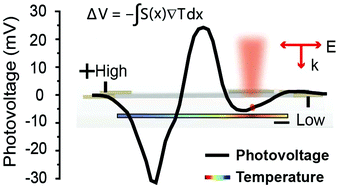
Nanoscale, 2019,11, 4918-4924
https://doi.org/10.1039/C8NR10222H
Ultrahigh-efficiency aqueous flat nanocrystals of CdSe/CdS@Cd1−xZnxS colloidal core/crown@alloyed-shell quantum wells
Highly efficient aqueous quantum wells are obtained from composition-tuned gradient shells with monolayer precision.

Nanoscale, 2019,11, 301-310
https://doi.org/10.1039/C8NR07879C
An integrated experimental and theoretical study on the optical properties of uniform hairy noble metal nanoparticles
An integrated experimental and modeling study reveals the contributions of intra- and inter-band transitions and the size and surface ligand effects on plasmonic absorption.
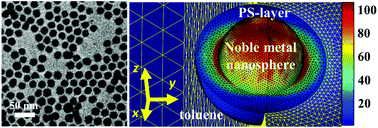
Nanoscale, 2018,10, 22750-22757
https://doi.org/10.1039/C8NR07115B
Fabrication and understanding of Cu3Si-Si@carbon@graphene nanocomposites as high-performance anodes for lithium-ion batteries
A high-performance anode material of Cu3Si-SCG is developed with outstanding rate capability and cycle stability for lithium-ion batteries.
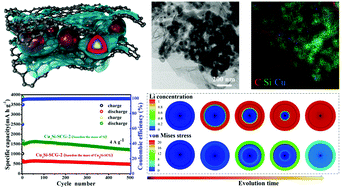
Nanoscale, 2018,10, 22203-22214
https://doi.org/10.1039/C8NR07207H
Hierarchical manganese dioxide nanoflowers enable accurate ratiometric fluorescence enzyme-linked immunosorbent assay
We first developed a green, mild and rapid method for the preparation of hierarchical manganese dioxide nanoflowers (MnO2 NFs) as nanozymes with intrinsic oxidase-like activity using citric acid for the reduction of potassium permanganate.

Nanoscale, 2018,10, 21893-21897
https://doi.org/10.1039/C8NR07096B
Self-scrolling MoS2 metallic wires
Herein, the properties of quasi-1D MoS2 nanoscrolls are systemically studied via experiment and theoretical simulation demonstrating that MoS2 can transit from semiconductor to metal by self-scrolling.

Nanoscale, 2018,10, 18178-18185
https://doi.org/10.1039/C8NR04611E
Preparation of Sb nanoparticles in molten salt and their potassium storage performance and mechanism
We have fabricated a high-performance Sb anode, applied it for use in PIBs, and explored its reversible potassiation/depotassiation mechanism.
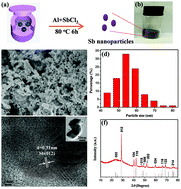
Nanoscale, 2018,10, 13236-13241
https://doi.org/10.1039/C8NR03829E
DNA-templated silver nanoclusters locate microRNAs in the nuclei of gastric cancer cells
We present a facile method to visualize miRNAs at the subcellular level, benefiting the precise localization of miRNAs in single cells.
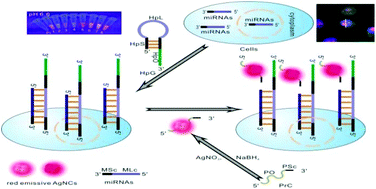
Nanoscale, 2018,10, 11079-11090
https://doi.org/10.1039/C8NR02634C
Three-dimensional porous microspheres comprising hollow Fe2O3 nanorods/CNT building blocks with superior electrochemical performance for lithium ion batteries
Three-dimensional hollow Fe2O3 nanorod/CNT microspheres for lithium ion batteries were successfully prepared by a novel strategy.
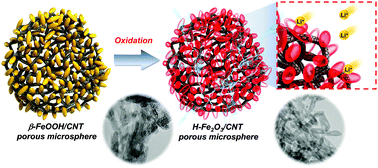
Nanoscale, 2018,10, 11150-11157
https://doi.org/10.1039/C8NR02686F
Coke-resistant defect-confined Ni-based nanosheet-like catalysts derived from halloysites for CO2 reforming of methane
Coke-resistant defect-confined Ni-based nanosheet-like catalysts derived from halloysites were developed for CO2 reforming of methane.
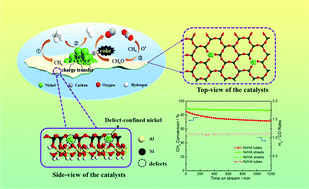
Nanoscale, 2018,10, 10528-10537
https://doi.org/10.1039/C8NR02006J
MoSe2 nanosheet/MoO2 nanobelt/carbon nanotube membrane as flexible and multifunctional electrodes for full water splitting in acidic electrolyte
Porous, conductive and flexible membranes, composed of MoSe2 NSs, MoO2 NBs and CNTs, were successfully prepared and possessed remarkable electrocatalytic performance for full water splitting in acidic electrolyte.
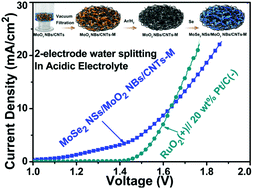
Nanoscale, 2018,10, 9268-9275
https://doi.org/10.1039/C8NR01572D
Center-iodized graphene as an advanced anode material to significantly boost the performance of lithium-ion batteries
Center-iodized graphene (CIG) exhibiting distinctly higher Li-storage activity than edge-iodized graphene (EIG) is a promising anode material in high-power LIBs.
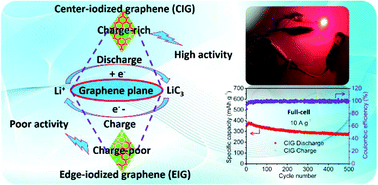
Nanoscale, 2018,10, 9115-9122
https://doi.org/10.1039/C8NR00061A
Tuning pentacene based dye-sensitized solar cells
Herein, the synthesis, photophysics and electrochemistry of new pentacenes, which are applied in dye-sensitized solar cells, are presented. The electrolyte is optimized using Li+ as an additive to enhance electron injection, giving rise to a unique injection event. This leads to a 3-fold increase from previous efficiencies in pentacene-based DSSCs.
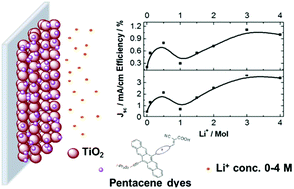
Nanoscale, 2018,10, 8515-8525
https://doi.org/10.1039/C8NR01502C
Polydopamine nanoparticles for the treatment of acute inflammation-induced injury
Nanotechnology-mediated anti-inflammatory therapy is emerging as a novel strategy for the treatment of inflammation-induced injury.
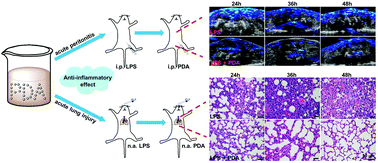
Nanoscale, 2018,10, 6981-6991
https://doi.org/10.1039/C8NR00838H
Graphene oxide size and oxidation degree govern its supramolecular interactions with siRNA
We systematically studied the interactions between graphene oxide (GO) and siRNA. The siRNA secondary structure is damaged by the interaction with GO sheets. Functionalization of GO with polyethyleneimine is able to protect siRNA from structural modifications.

Nanoscale, 2018,10, 5965-5974
https://doi.org/10.1039/C8NR00333E
Largely enhanced photocatalytic activity of Au/XS2/Au (X = Re, Mo) antenna–reactor hybrids: charge and energy transfer
An antenna–reactor hybrid coupling plasmonic antenna with catalytic nanoparticles is a new strategy to optimize photocatalytic activity.
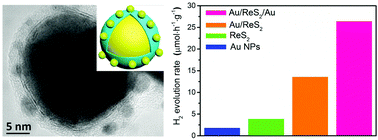
Nanoscale, 2018,10, 4130-4137
https://doi.org/10.1039/C7NR09362D
Highly robust, uniform and ultra-sensitive surface-enhanced Raman scattering substrates for microRNA detection fabricated by using silver nanostructures grown in gold nanobowls
Highly sensitive and reproducible suface enhanced Raman spectroscopy (SERS) substrates were fabricated by growing multiple silver nanocrystals inside periodically arrayed gold nanobowls.

Nanoscale, 2018,10, 3680-3687
https://doi.org/10.1039/C7NR08066B
Unconventional gas-based bottom-up, meter-area-scale fabrication of hydrogen-bond free g-CN nanorod arrays and coupling layers with TiO2 toward high-efficiency photoelectrochemical performance
A straightforward gas-based bottom-up method VMFAIP was used to fabricate meter-scale uniform g-CN nanorod arrays directly on FTO glass.
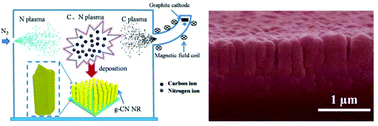
Nanoscale, 2018,10, 3342-3349
https://doi.org/10.1039/C7NR09244J
Gateway state-mediated, long-range tunnelling in molecular wires
Gateway states in Au/single-molecule/Au junctions profoundly attenuate the conductance decay with length for thiol-contacted alkyl-aromatic-alkyl systems.
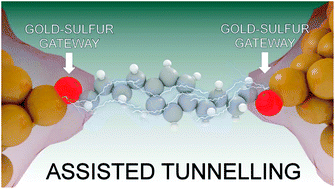
Nanoscale, 2018,10, 3060-3067
https://doi.org/10.1039/C7NR07243K
CoP nanoparticles anchored on N,P-dual-doped graphene-like carbon as a catalyst for water splitting in non-acidic media
CoP nanoparticles anchored on N,P-dual-doped graphene-like carbon as efficient bifunctional water splitting catalyst in non-acidic media.
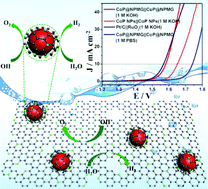
Nanoscale, 2018,10, 2603-2612
https://doi.org/10.1039/C7NR07274K
Chiral evolution of carbon dots and the tuning of laccase activity
Chiral CDs synthesized by an alkali-assisted method have been demonstrated to tune the activity of laccase selectively for the first time.
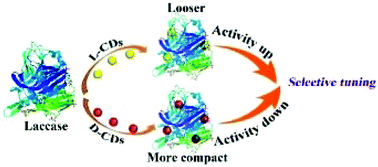
Nanoscale, 2018,10, 2333-2340
https://doi.org/10.1039/C7NR08335A
Cascaded photo-potential in a carbon dot-hematite system driving overall water splitting under visible light
The hematite based photocatalyst exhibits overall water splitting under visible light without any external bias or scavenger.
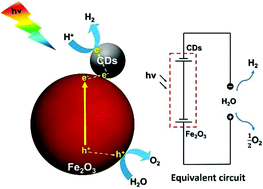
Nanoscale, 2018,10, 2454-2460
https://doi.org/10.1039/C7NR08000J
White light emission in Bi3+/Mn2+ ion co-doped CsPbCl3 perovskite nanocrystals
Taking advantage of the cooperation between the excitonic transition of the CsPbCl3 perovskite NC host and the intrinsic emissions from Bi3+ and Mn2+ ions, white light emission was developed in the codoped CsPbCl3 NCs.
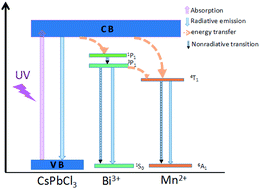
Nanoscale, 2018,10, 1023-1029
https://doi.org/10.1039/C7NR08136G
Metal ion assisted interface re-engineering of a ferritin nanocage for enhanced biofunctions and cancer therapy
The bottom-up self-assembly of protein subunits into supramolecular nanoarchitectures is ubiquitously exploited to recapitulate and expand features of natural proteins to advance nanoscience in medicine.
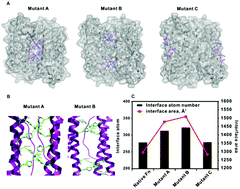
Nanoscale, 2018,10, 1135-1144
https://doi.org/10.1039/C7NR08188J
Probing fibronectin conformation on a protein corona layer around nanoparticles
Proteins adsorbed on the protein corona-coated NPs through protein–protein interaction undergo less structural changes than those directly attach to the surface of NP.
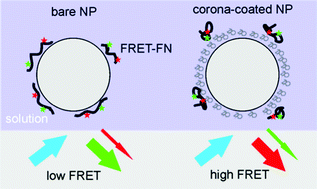
Nanoscale, 2018,10, 1228-1233
https://doi.org/10.1039/C7NR06970G
In vivo formation of protein corona on gold nanoparticles. The effect of their size and shape
A detailed study is presented of in vivo protein corona formation on anisotropic gold nanoparticles, after blood circulation in mice.
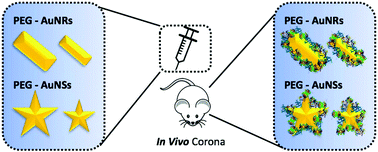
Nanoscale, 2018,10, 1256-1264
https://doi.org/10.1039/C7NR08322J
Biodegradable MoOx nanoparticles with efficient near-infrared photothermal and photodynamic synergetic cancer therapy at the second biological window
Biodegradable MoOx nanoparticles not only can convert light into heat but also generate ROS which realized synergic mild PTT and PDT under NIR-II laser (1064 nm) irradiation.
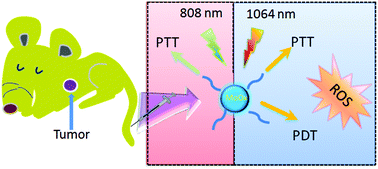
Nanoscale, 2018,10, 1517-1531
https://doi.org/10.1039/C7NR07927C
Upconverting nanocomposites with combined photothermal and photodynamic effects
Upconverting hybrid nanocomposites consisting of gold nanorod cores and decorated with upconverting nanoparticles were prepared for photothermal and photodynamic applications.
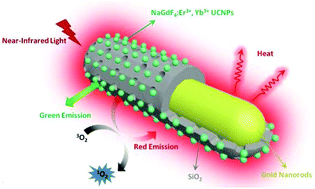
Nanoscale, 2018,10, 791-799
https://doi.org/10.1039/C7NR05499H
Understanding the formation of the metastable ferroelectric phase in hafnia–zirconia solid solution thin films
The origin of the formation of the unexpected ferroelectric orthorhombic phase is systematically examined based on both thermodynamics and kinetics.
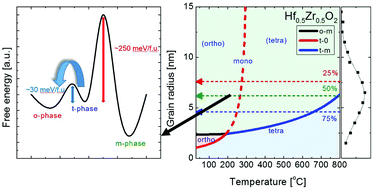
Nanoscale, 2018,10, 716-725
https://doi.org/10.1039/C7NR06342C
Coupling interconnected MoO3/WO3 nanosheets with a graphene framework as a highly efficient anode for lithium-ion batteries
A rationally assembled interconnected MoO3/WO3-graphene framework as a highly efficient anode for lithium-ion batteries is fabricated through a one-step template-free strategy.

Nanoscale, 2018,10, 396-402
https://doi.org/10.1039/C7NR07849H
Photo-enhanced antibacterial activity of ZnO/graphene quantum dot nanocomposites
ZnO/GQD nanocomposites exhibit markedly enhanced antimicrobial activity under UV photoirradiation as compared to that in ambient room light, due to photo-induced generation of reactive oxygen species. The activity of the nanocomposite is also higher than that with the individual components.
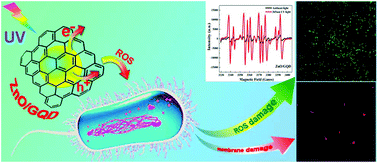
Nanoscale, 2018,10, 158-166
https://doi.org/10.1039/C7NR07367D
Self-assembly of Au@Ag core–shell nanocuboids into staircase superstructures by droplet evaporation
Staircase superstructures of nanocuboids are achieved using two-stage droplet evaporation and SERS performances are demonstrated with layer dependency.
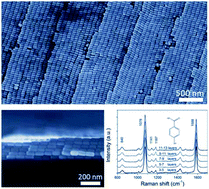
Nanoscale, 2018,10, 142-149
https://doi.org/10.1039/C7NR05767A
Laser-structured Janus wire mesh for efficient oil–water separation
We fabricate a Janus wire mesh by laser structuring and subsequent fluorosilane/graphene oxide modification for efficient oil/water separation.
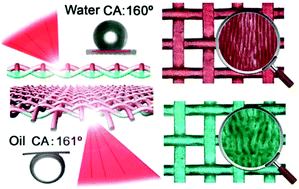
Nanoscale, 2017,9, 17933-17938
https://doi.org/10.1039/C7NR06110B
An active structure preservation method for developing functional graphitic carbon dots as an effective antibacterial agent and a sensitive pH and Al(III) nanosensor
A facile active structure preservation (ASP) method was developed to prepare self-functional graphitic carbon dots that integrate the features of antibiosis, pH-sensitive emission and detection of Al(III).
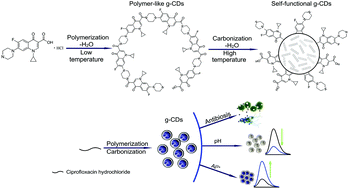
Nanoscale, 2017,9, 17334-17341
https://doi.org/10.1039/C7NR05539K
Design and mechanism of core–shell TiO2 nanoparticles as a high-performance photothermal agent
High-performance photothermal agents have become particularly fascinating, however, the influence of crystallization nature on their photothermal performance remains elusive.
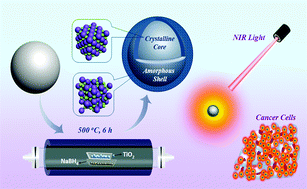
Nanoscale, 2017,9, 16183-16192
https://doi.org/10.1039/C7NR02848B
Scalable synthesis of SnS2/S-doped graphene composites for superior Li/Na-ion batteries
A facile dissolution–regeneration strategy is proposed to construct large-scale flexible SnS2/sulfur-doped graphene composites as anodes for LIBs and SIBs.
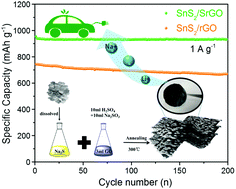
Nanoscale, 2017,9, 14820-14825
https://doi.org/10.1039/C7NR06044K
Thickness dependent semiconductor-to-metal transition of two-dimensional polyaniline with unique work functions
The semiconductor and metallic conductivities can be co-realized in homogeneous 2D-PANI simply by controlling the thickness.
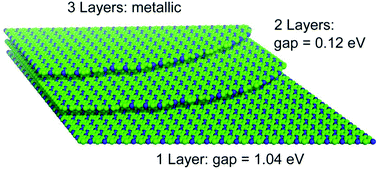
Nanoscale, 2017,9, 12025-12031
https://doi.org/10.1039/C7NR03281A
CpG loaded MoS2 nanosheets as multifunctional agents for photothermal enhanced cancer immunotherapy
A novel multifunctional platform based on MoS2 nanosheets was designed for photothermal enhanced CpG delivery and cancer immunotherapy.
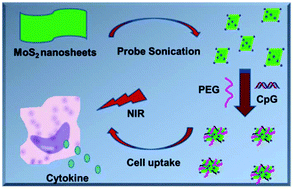
Nanoscale, 2017,9, 5927-5934
https://doi.org/10.1039/C7NR01460K
Composition- and phase-controlled synthesis and applications of alloyed phase heterostructures of transition metal disulphides
1T/2H Mo1−xWxS2 phase-heterostructures were prepared via a one-step liquid-phase method, and showed composition- and phase-dependent electrochemical and electronic properties.

Nanoscale, 2017,9, 5102-5109
https://doi.org/10.1039/C7NR01015J
Organic nanostructure-based probes for two-photon imaging of mitochondria and microbes with emission between 430 nm and 640 nm
We develop a series of sensors for targeting mitochondria and microbes based on luminescent nanomaterials, which consist of TPE peripheries and N-heterocycles and are excited by one- or two-photon excitation.
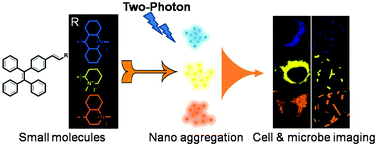
Nanoscale, 2017,9, 4770-4776
https://doi.org/10.1039/C7NR00342K
Long circulating reduced graphene oxide–iron oxide nanoparticles for efficient tumor targeting and multimodality imaging
Double PEGylated RGO-IONP exhibited ultra-long circulation half-life and high tumor accumulation for multimodality imaging.
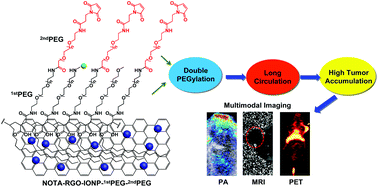
Nanoscale, 2016,8, 12683-12692
https://doi.org/10.1039/C5NR09193D
Label-free and enzyme-free platform for the construction of advanced DNA logic devices based on the assembly of graphene oxide and DNA-templated AgNCs
For the first time a label- and enzyme-free platform for the operation of a series of advanced logic devices is constructed; introducing negative logic, a label- and enzyme-free comparator was also successfully realized.
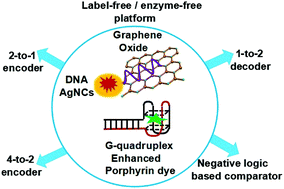
Nanoscale, 2016,8, 3834-3840
https://doi.org/10.1039/C6NR00032K
About this collection
As part of the celebrations for Nanoscale’s 10th Anniversary in 2019, we wanted to celebrate the work of some of our authors who have published with us extensively over the last 10 years. This online article collection features recent articles published by the top 55 authors who have published in Nanoscale the most frequently since the journal was launched in 2009.
We would like to thank all of our authors for your fantastic ongoing support!
All articles in the collection are free to read until the end of 2019. Access them via your free Royal Society of Chemistry publishing personal account